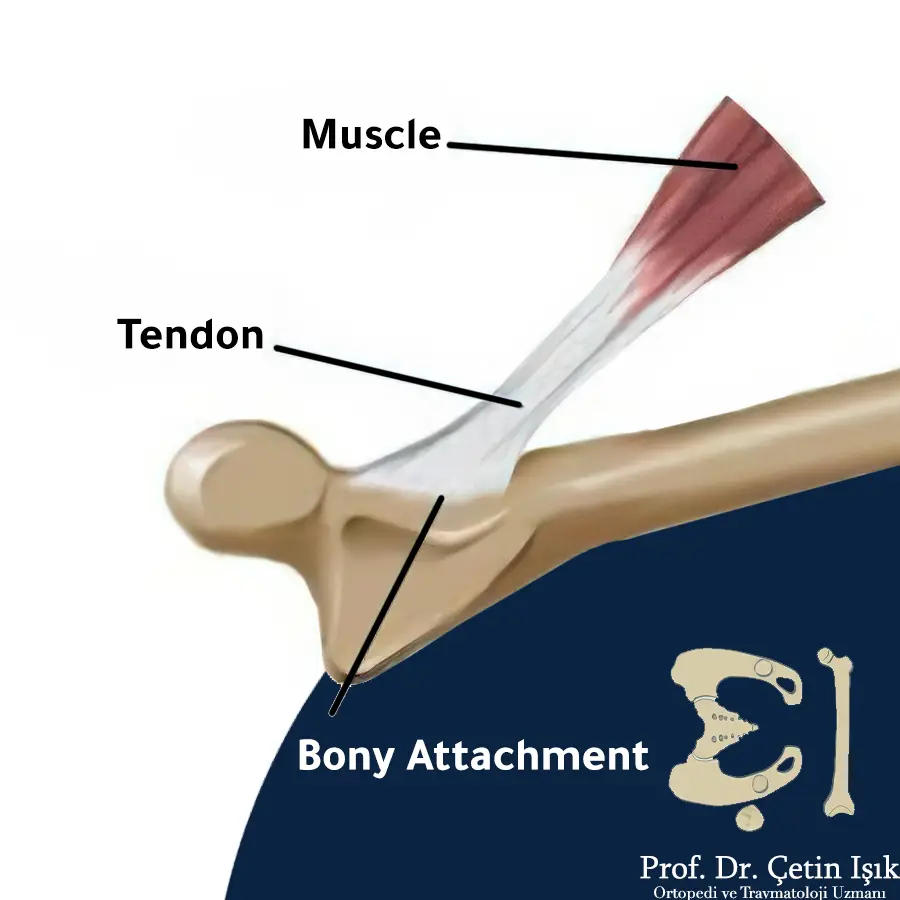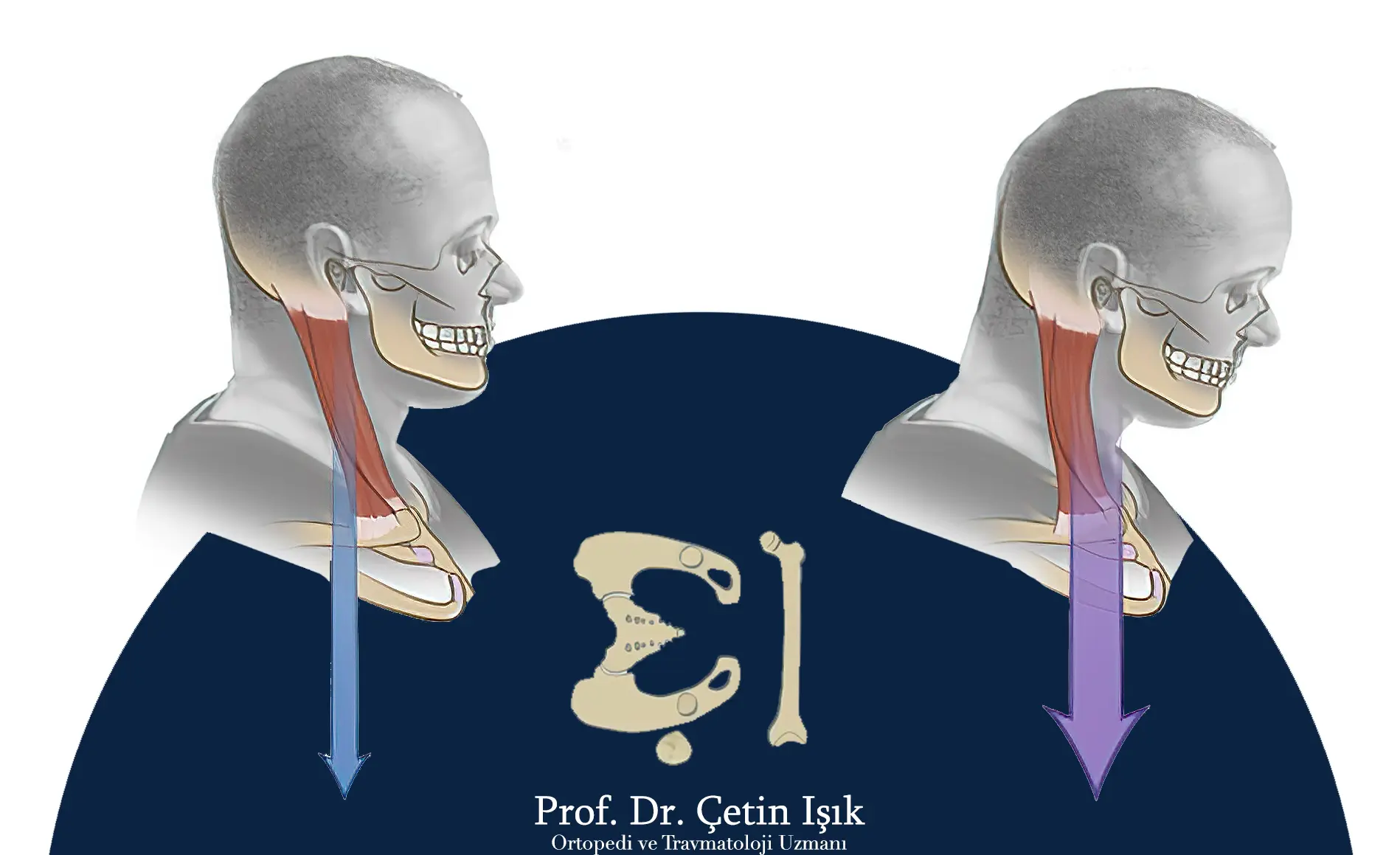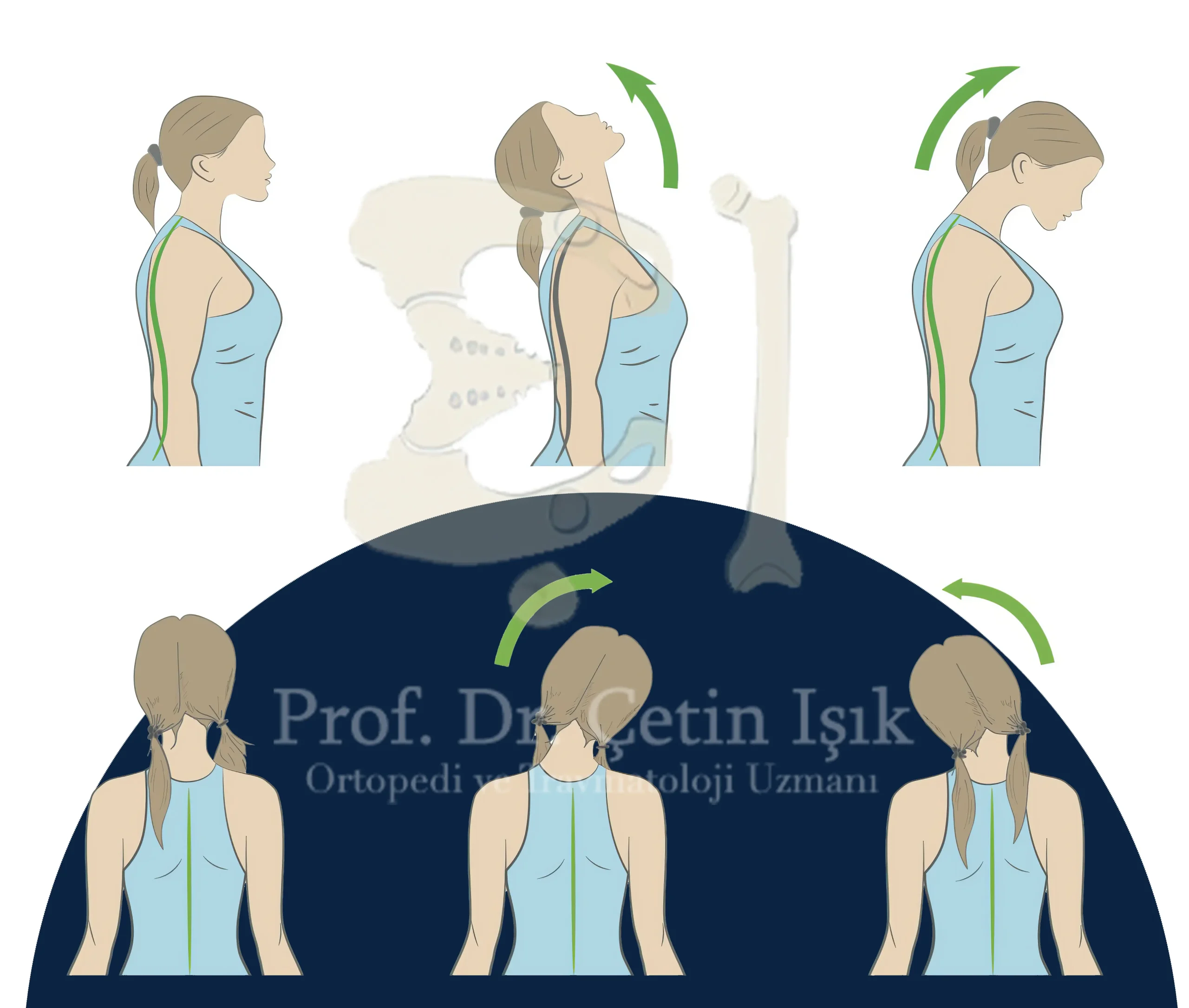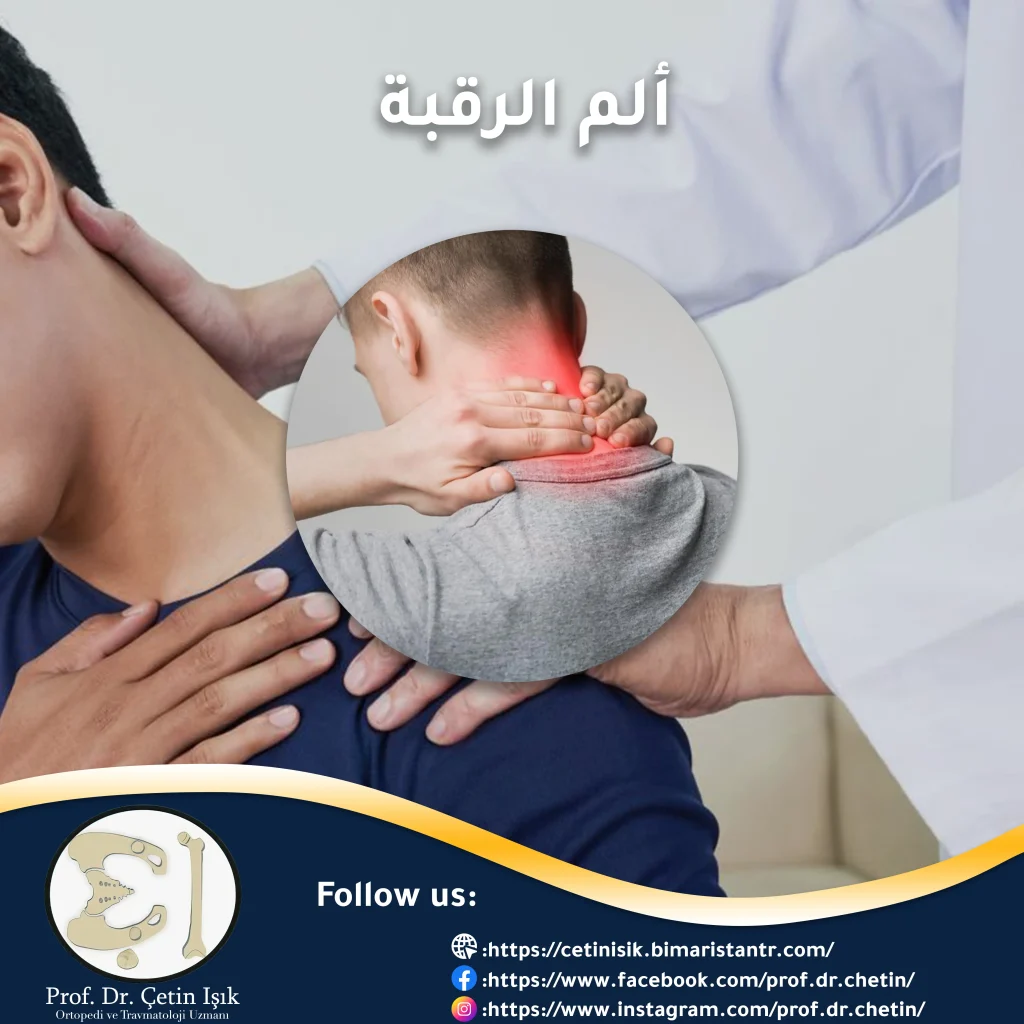What is neck tendonitis?
التهاب أوتار الرقبة (Neck Tendonitis) هو حالة التهابية تصيب الأوتار التي تربط عضلات الرقبة بالعظام، ما يؤدي إلى ألم في العنق قد يمتد إلى الكتفين ويحدّ من حركة الرقبة. يُعدّ هذا الالتهاب من الحالات الشائعة الناتجة غالباً عن الوضعيات غير الصحية أثناء العمل أو النوم.
أهمية التعرف على التهاب أوتار العنق
تكمن خطورة التهاب أوتار العنق في إمكانية تحوله إلى حالة مزمنة، وقد يسبب تمزق الوتر أو تندبه في حال إهمال العلاج، مما يؤثر على قدرة الشخص على أداء مهامه اليومية. لذا، فإن التشخيص المبكر وبدء العلاج المناسب أمران في غاية الأهمية.

تشريح أوتار الرقبة ووظيفتها
الأوتار هي أنسجة ليفية قوية تربط العضلات بالعظام، وتسمح بنقل القوة الناتجة عن تقلص العضلات لتحريك المفاصل. وتُقسم أوتار الرقبة إلى:
- أوتار الرقبة الأمامية: مثل وتر العضلة القترائية، والعضلات القصية اللامية والكتفية اللامية.
- أوتار الرقبة الخلفية: تشمل أوتار العضلة شبه المنحرفة، والعضلة القذالية، والرأسية الطحالية.
تغلف هذه الأوتار أغمدة رقيقة تساعدها على الانزلاق أثناء الحركة.
Causes of neck tendonitis
1. الوضعيات الخاطئة
تُعد من أهم الأسباب، خصوصاً الجلوس أمام الحاسوب لفترات طويلة مع انحناء الرأس للأمام.

2. الإجهاد المتكرر
كالاستخدام المكثف للكمبيوتر أو الهاتف المحمول أو القيادة الطويلة.

3. وضعية النوم غير الصحيحة
مثل النوم على البطن أو استخدام وسادة مرتفعة جداً أو منخفضة جداً.
4. الصدمات والرضوض
كحوادث السيارات التي تؤدي إلى ما يُعرف بـ “التواء الرقبة” أو المصع (Whiplash Injury).
5. الأمراض المزمنة
مثل: الروماتويد، النقرس، أمراض الكلى، واضطرابات الدم التي تؤثر على الأوتار والمفاصل.
Symptoms of neck tendonitis
- ألم حاد أو مزمن في الرقبة، يزداد مع الحركة أو الضغط على الوتر.
- تصلب الرقبة وصعوبة في تحريك الرأس.
- ألم ينتشر إلى الكتف أو أعلى الظهر.
- تورم واحمرار موضعي في الرقبة.
- صدور صوت صرير أو احتكاك أثناء تحريك العنق.
- حساسية عند لمس الرقبة (مضض موضعي).
Diagnosis of neck tendonitis
يتم التشخيص عادة عبر Clinical examination، وقد يطلب الطبيب بعض الفحوص التصويرية في حال وجود شك بوجود تمزق أو حالات أخرى مشابهة:
- صورة شعاعية بسيطة (X-Ray)
- التصوير بالأمواج فوق الصوتية (Ultrasound)
- التصوير بالرنين المغناطيسي (MRI)
Neck tendonitis treatment
1. العلاج المنزلي
- الراحة وتجنب الإجهاد: أهم خطوة في العلاج.
- الكمادات الباردة: توضع على الرقبة لتقليل الالتهاب والتورم.
- المسكنات ومضادات الالتهاب غير الستيروئيدية (NSAIDs): مثل الإيبوبروفين أو الديكلوفيناك.
تتحسن معظم الحالات خلال أيام إلى أسابيع قليلة إذا التُزِم بالراحة والتدابير البسيطة.
2. العلاج الطبيعي (الفيزيائي)
يهدف إلى:
- تقوية عضلات وأوتار الرقبة
- استعادة مرونة الرقبة وحركتها الطبيعية
- تقليل التوتر العضلي

تقنيات العلاج الفيزيائي تشمل:
| نوع التقنية | الفائدة |
|---|---|
| التمارين الموجهة | تقوية وتمطيط العضلات والأوتار |
| العلاج اليدوي | تخفيف التشنج وتحسين المرونة |
| Electrical stimulation | تقليل الألم وتحفيز الدورة الدموية |
| الليزر العلاجي | تسريع التئام الأنسجة |
| الحرارة والثلج | تخفيف الالتهاب والألم |
3. العلاج بالإبر الجافة
يُجرى بإدخال إبر دقيقة في نقاط معينة لتحفيز شفاء الأوتار وتقليل الألم. يُعد فعالاً في حالات الالتهاب المزمن.

4. العلاج بالأمواج فوق الصوتية التداخلية
يُستخدم لإزالة التندب من الأوتار المصابة من خلال إجراء طفيف التوغل (Minimally Invasive).
5. العلاج الجراحي
يُجرى في حالات:
- تمزق الأوتار بالكامل
- انفصال الأوتار عن العظم
- فشل الطرق غير الجراحية
يتم خلاله:
- خياطة الوتر الممزق أو
- إعادة تثبيته بالعظم
يتبع الجراحة برنامج تأهيلي مكثف لمدة أسابيع لاستعادة الوظيفة الطبيعية للرقبة.
مضاعفات التهاب أوتار الرقبة
في حال إهمال العلاج، قد يحدث:
- تمزق الوتر: يؤدي إلى ألم شديد وفقدان القدرة على تحريك الرقبة.
- تندب الوتر والتصاقات: تُقيد حركة الرقبة بشكل دائم.
- تصلب الأوتار: تقلص وظيفي شديد يؤثر على جودة الحياة.
الوقاية من التهاب أوتار العنق
- تحسين وضعية الجلوس والعمل والنوم
- تعديل ارتفاع شاشة الكمبيوتر بحيث تكون في مستوى العين
- أخذ فواصل راحة كل 20 دقيقة عند الجلوس لفترة طويلة
- ممارسة تمارين التمدد اليومية للرقبة والكتفين
- استخدام وسادة طبية مناسبة للنوم
خلاصة
التهاب أوتار الرقبة حالة شائعة ولكنها قابلة للعلاج إذا تم اكتشافها مبكراً. الراحة، والعلاج الفيزيائي، وتعديل السلوك اليومي هي الركائز الأساسية للعلاج. لا تتردد في مراجعة الطبيب في حال استمرار الألم أو حدوث أعراض جديدة، لتفادي المضاعفات التي قد تؤثر على حياتك اليومية.
Read more about Home and natural neck sprain treatment
Sources:
Common questions
Symptoms of neck tendonitis include pain and tenderness when touching the neck, neck stiffness, swelling and redness in and around the neck, and a creaking sound when moving the neck.
Neck tendonitis can last for several weeks or months until complete recovery occurs.
Neck tendonitis can be cured in most cases through home treatment with rest and analgesics, and when using physical therapy, improvement is felt within a few days. Still, it may require a surgical procedure to heal in some cases.
A tendon and neck massage is useful in managing a tendon injury because it helps speed up the healing of tendonitis and relieve neck pain.
Hot water increases blood flow to the tendon and thus speeds up the healing of inflammation, so hot water is beneficial, especially in cases of chronic infections.




